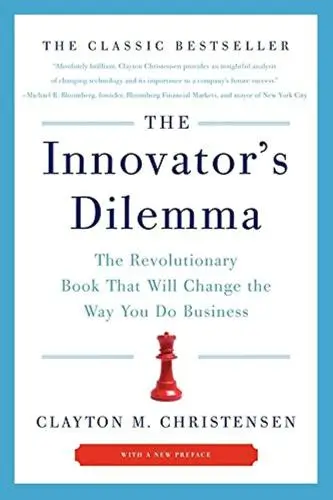
The Innovator's Dilemma
The Revolutionary Book That Will Change the Way You Do Business
What's it about?
The Innovator's Dilemma explores the challenges companies face when disruptive technologies threaten their established products. Clayton M. Christensen introduces the concept of disruptive innovation and provides strategies for navigating this dilemma. The book highlights the importance of recognizing and responding to disruptive forces to stay ahead in a rapidly evolving market. A must-read for business leaders seeking long-term success in an ever-changing landscape.
About the Author
Clayton M. Christensen (1952-2020) was a Harvard Business School professor and influential thought leader in business innovation and disruption. Author of "The Innovator's Dilemma," his work explores how established companies can be overtaken by upstarts through technological innovation, emphasizing the importance of strategic adaptability. His theories have significantly shaped modern management practices.
10 Key Ideas of The Innovator's Dilemma
Invest in Small Markets to Discover Big Opportunities
Focus on small, emerging markets that the competition overlooks.
These niches often have unique needs and are more willing to adopt innovative solutions.
By targeting these areas, companies can discover untapped potential and learn valuable lessons about market dynamics, customer needs, and product development.
This approach allows for experimentation and iteration, which are crucial for innovation.
Over time, these small markets can grow significantly, providing a solid foundation for larger-scale success.
Learn DeeperIdentify Emerging Markets: Start by researching industries or sectors that are in their nascent stages but show potential for growth. Look for areas where current solutions are inadequate or non-existent.
Engage with Early Adopters: Once you've identified a promising small market, engage with potential customers who are most likely to be early adopters. These individuals can provide valuable feedback and help refine your product or service.
Iterate Based on Feedback: Use the insights gained from early adopters to iterate on your product or service. This process of continuous improvement will help you better meet the needs of your target market.
Leverage Unique Value Propositions: Focus on what makes your solution unique and how it specifically addresses the needs of your chosen market. This differentiation is key to gaining traction in a small, emerging market.
Scale Gradually: As your product or service gains popularity, plan for gradual scaling. This approach allows you to manage growth effectively without compromising on quality or customer experience.
- Example
Dropbox initially targeted tech-savvy users who needed a simple way to share large files and sync them across multiple devices. By focusing on this niche market, they were able to refine their product and eventually expand to a broader audience.
- Example
Tesla Motors first produced the Roadster, a high-end electric sports car, targeting a small market of environmentally conscious and wealthy individuals. This strategy allowed Tesla to establish its brand and technology before moving into more mainstream markets with subsequent models.
Prioritize Disruptive Technologies Over Sustaining Innovations
Disruptive technologies initially might not meet the needs of mainstream customers or seem as profitable as sustaining innovations that cater to existing markets.
However, they have the potential to redefine industries by offering simpler, more convenient, or cheaper solutions.
Companies should allocate resources to explore these technologies, even if the immediate returns aren't apparent.
Over time, disruptive technologies can evolve and capture a significant portion of the market, outperforming traditional offerings.
Learn DeeperStay Informed About Emerging Technologies: Regularly read tech blogs, attend industry conferences, or participate in webinars. This habit will help you spot potential disruptive technologies early on.
Allocate a Portion of Your Resources for Experimentation: Whether it's time, money, or effort, dedicating resources to explore new technologies can pay off. Start small with pilot projects or prototypes to test the waters without significant risk.
Encourage a Culture of Innovation: Foster an environment where team members feel comfortable proposing unconventional ideas. Celebrate creative thinking and the willingness to tackle problems from new angles.
Evaluate Your Offerings Against New Market Entrants: Periodically assess how your products or services stack up against those from emerging competitors. This can help you identify areas for improvement or opportunities for disruption in your own business.
Be Willing to Pivot: If you find a disruptive technology that could significantly impact your industry, be prepared to shift your business model or strategy to leverage this innovation. Flexibility can be a key asset in staying relevant.
- Example
Netflix's transition from DVD rentals by mail to streaming services disrupted the traditional video rental industry and eventually the broader television and film distribution markets.
- Example
Digital photography, initially inferior to film in quality, gradually improved and became widely accessible, leading to the disruption of the film-based photography market, exemplified by Kodak's decline.
Foster an Independent Organizational Culture for New Ventures
Innovative projects often struggle within the confines of a company's established culture and processes, which are designed to support the current business model.
Creating a separate organizational unit with its own culture, processes, and metrics can provide the freedom necessary for innovation to thrive.
This independence allows for faster decision-making, tailored approaches to market entry, and the agility to pivot when necessary.
It also helps in attracting talent that is motivated by the challenge of building something new.
Learn DeeperIdentify the Need for Innovation: Start by recognizing areas within your organization that are ripe for innovation. Look for markets or products that are stagnating or where customer needs are not fully met.
Create a Separate Innovation Team: Form a dedicated team focused on innovation, separate from the core business operations. This team should have its own budget, goals, and the freedom to explore new ideas without the constraints of the existing business model.
Establish Unique Metrics for Success: Develop metrics that are relevant to the innovation project, rather than applying the standard metrics used in the rest of the company. These could include measures of learning, market validation, or early adoption rates.
Foster a Culture of Experimentation: Encourage the innovation team to experiment and fail fast. Learning from failures and iterating quickly is key to finding a successful innovation.
Provide Strategic Autonomy: While oversight is necessary, give the innovation team the autonomy to make strategic decisions about their projects. This includes decisions about product features, market entry strategies, and pivots.
- Example
Google's creation of Alphabet Inc. as a parent holding company allowed its various businesses to operate independently, fostering innovation in diverse areas such as self-driving cars (Waymo) and health technology (Verily).
- Example
Amazon's establishment of Amazon Web Services (AWS) as a separate entity from its e-commerce business. This allowed AWS to innovate and grow into a leading cloud service provider, serving a wide range of customers with different needs than Amazon's traditional retail business.
Embrace Customer Feedback for Continuous Improvement
Engage directly with early adopters and solicit their feedback rigorously.
This interaction provides insights into how products are used in real-world scenarios, revealing unforeseen opportunities and challenges.
Use this feedback to iterate on the product, making continuous improvements that better meet customer needs.
This process not only enhances the product but also builds a loyal customer base that feels invested in the product's success.
Learn DeeperStart Small and Listen: Begin by identifying a small group of early adopters for your product or service. These are the users who are most likely to see the potential in what you're offering, even if it's not perfect yet. Engage with them through surveys, direct interviews, or user testing sessions to gather their feedback.
Iterate Based on Feedback: Use the insights gained from your early adopters to make informed changes to your product. This could mean tweaking features, adjusting the user interface, or even pivoting your approach entirely. The key is to be open to change and responsive to the needs and challenges your users are communicating.
Build a Feedback Loop: Establish a system for continuous feedback collection and analysis. This could be as simple as a monthly survey or as complex as an integrated feedback tool within your product. The goal is to make giving feedback easy and natural for your users, ensuring you always have a pulse on their needs and experiences.
Celebrate and Share Improvements: When you make changes based on user feedback, let your users know. This not only shows that you value their input but also demonstrates your commitment to improving their experience. Sharing updates and improvements can help foster a community of loyal users who feel invested in your product's journey.
- Example
A mobile app developer releases a beta version of their new fitness app to a select group of fitness enthusiasts. They use in-app surveys and direct communication channels to gather feedback on everything from the user interface to the workout plans offered. Based on this feedback, they introduce a more personalized workout plan feature, which significantly increases user engagement and satisfaction.
- Example
A small online bookstore starts by curating books for a niche audience. They regularly engage with their customers through email newsletters, asking for book recommendations and feedback on their service. Using this feedback, they expand their catalog to include requested genres and introduce a book subscription service, which becomes a major hit among their customer base.
Implement Agile Development Processes
Adopt agile methodologies to accelerate the development cycle and respond quickly to changes in the market or technology.
Agile practices encourage cross-functional collaboration, iterative development, and flexibility.
By breaking down projects into smaller, manageable parts, teams can focus on delivering value incrementally, learning from each release, and adapting based on feedback and changing conditions.
This approach reduces the risk of large-scale failures and ensures that the product evolves in alignment with customer needs.
Learn DeeperStart Small: Begin by breaking down your project into smaller, more manageable tasks. This makes it easier to adjust as you go, rather than being overwhelmed by a massive project.
Embrace Change: Adopt a mindset that welcomes changes and feedback. Use these as opportunities to learn and improve your project, rather than seeing them as setbacks.
Foster Collaboration: Encourage open communication and collaboration among team members from different disciplines. This cross-functional approach can spark innovative solutions and ensure that all aspects of the project are aligned.
Iterate Quickly: Implement short development cycles, or sprints, to rapidly produce workable versions of your product. After each sprint, review what was accomplished, learn from it, and plan the next steps based on current knowledge and feedback.
Gather Feedback: Regularly seek input from your target users or stakeholders. Use their feedback to guide future development cycles, ensuring that the final product truly meets their needs.
- Example
A software development team adopts agile methodologies by organizing their work into two-week sprints. At the end of each sprint, they demo the new features to stakeholders and incorporate their feedback into the next sprint.
- Example
A marketing team working on a new campaign decides to apply agile principles. They break the campaign into phases, each with specific goals and deliverables. After each phase, they review the results, gather feedback from the target audience, and adjust their strategy accordingly.
Deeper knowledge. Personal growth. Unlocked.
Unlock this book's key ideas and 15M+ more. Learn with quick, impactful summaries.
Read Full SummarySign up and read for free!
The Innovator's Dilemma Summary: Common Questions
Experience Personalized Book Summaries, Today!
Discover a new way to gain knowledge, and save time.
Sign up for our 7-day trial now.
No Credit Card Needed

Similar Books
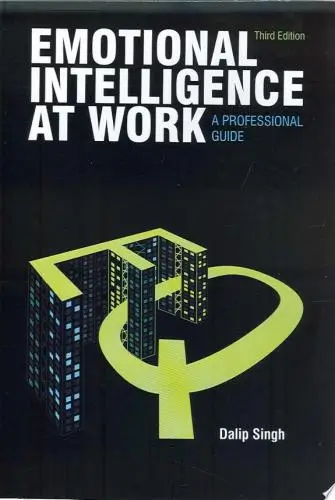
Emotional Intelligence at Work
Dalip Singh
Seeing the Big Picture
Kevin Cope
Leadership Is Concept Heavy
Dr. Enoch Antwi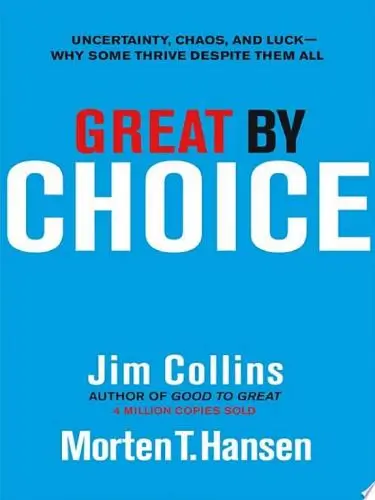
Great by Choice
Jim Collins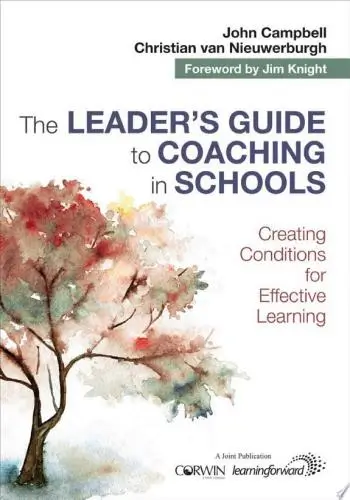
The Leader′s Guide to Coaching in Schools
John Campbell
Preparing School Leaders for the 21st Century
Stephan Gerhard Huber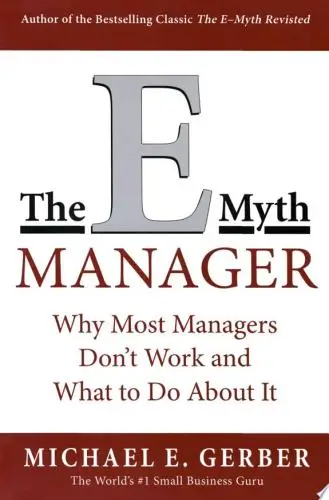
The E-Myth Manager
Michael E. Gerber
Leadership Is Language
L. David Marquet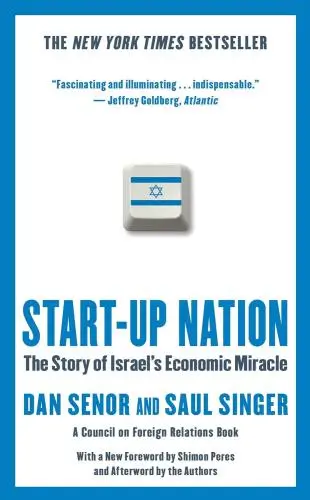
Start-up Nation
Dan Senor
The Founder's Dilemmas
Noam WassermanTrending Summaries

Peak
Anders Ericsson
Never Split the Difference
Chris Voss
Smart Brevity
Jim VandeHei
The Psychology of Money
Morgan Housel
The First 90 Days
Michael D. Watkins
Atomic Habits
James Clear
Thinking, Fast and Slow
Daniel Kahneman
The Body Keeps the Score
Bessel van der Kolk M.D.
The Power of Regret
Daniel H. Pink
The Compound Effect
Darren HardyNew Books

The Art of Spending Money
Morgan Housel
$100M Offers
Alex Hormozi
A Candle for Kiri
Edna Mae Holm
Principles of Marketing, Global Edition
Gary Armstrong
Serpent Rising: The Kundalini Compendium
Neven Paar
Feeling Is the Secret
Neville Goddard
The 100 Best Business Books of All Time
Jack Covert
My Oxford Year
Julia Whelan
Trading in the Zone
Mark Douglas
